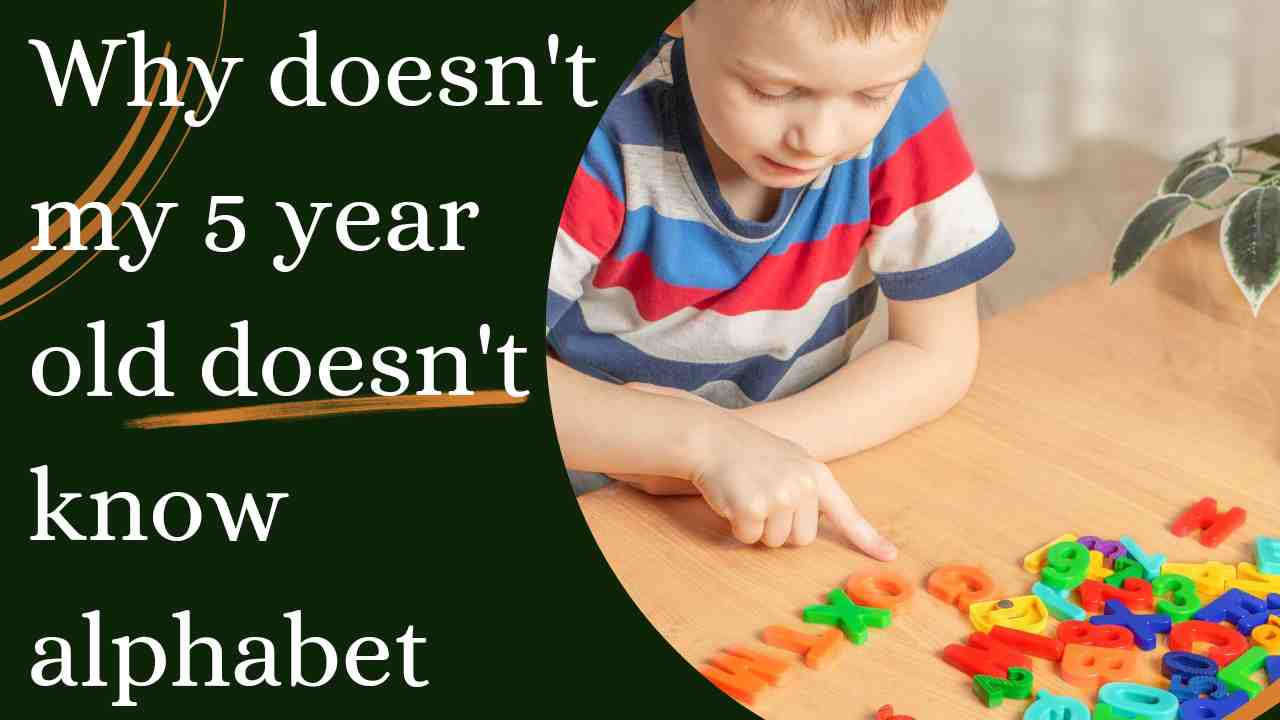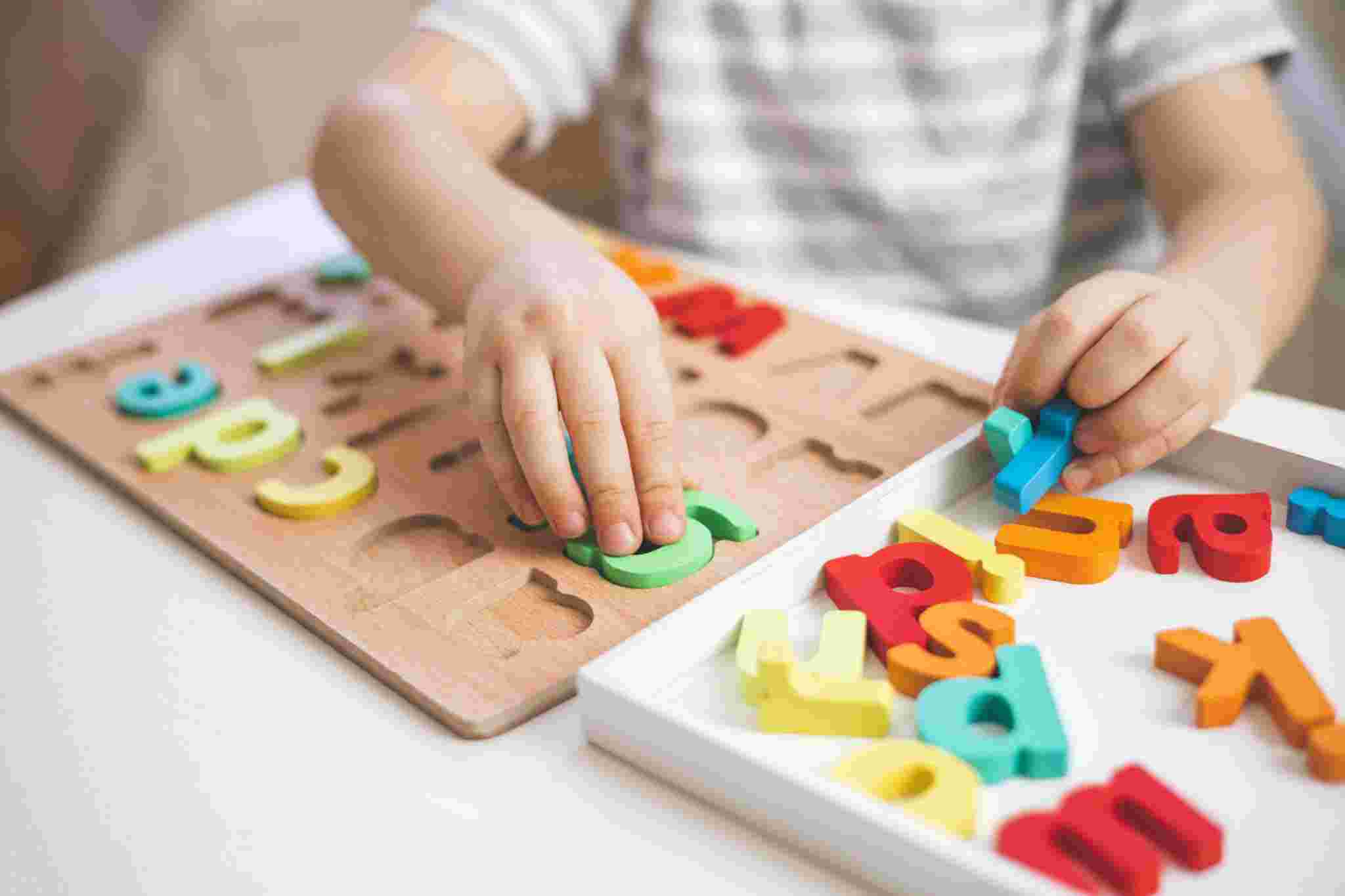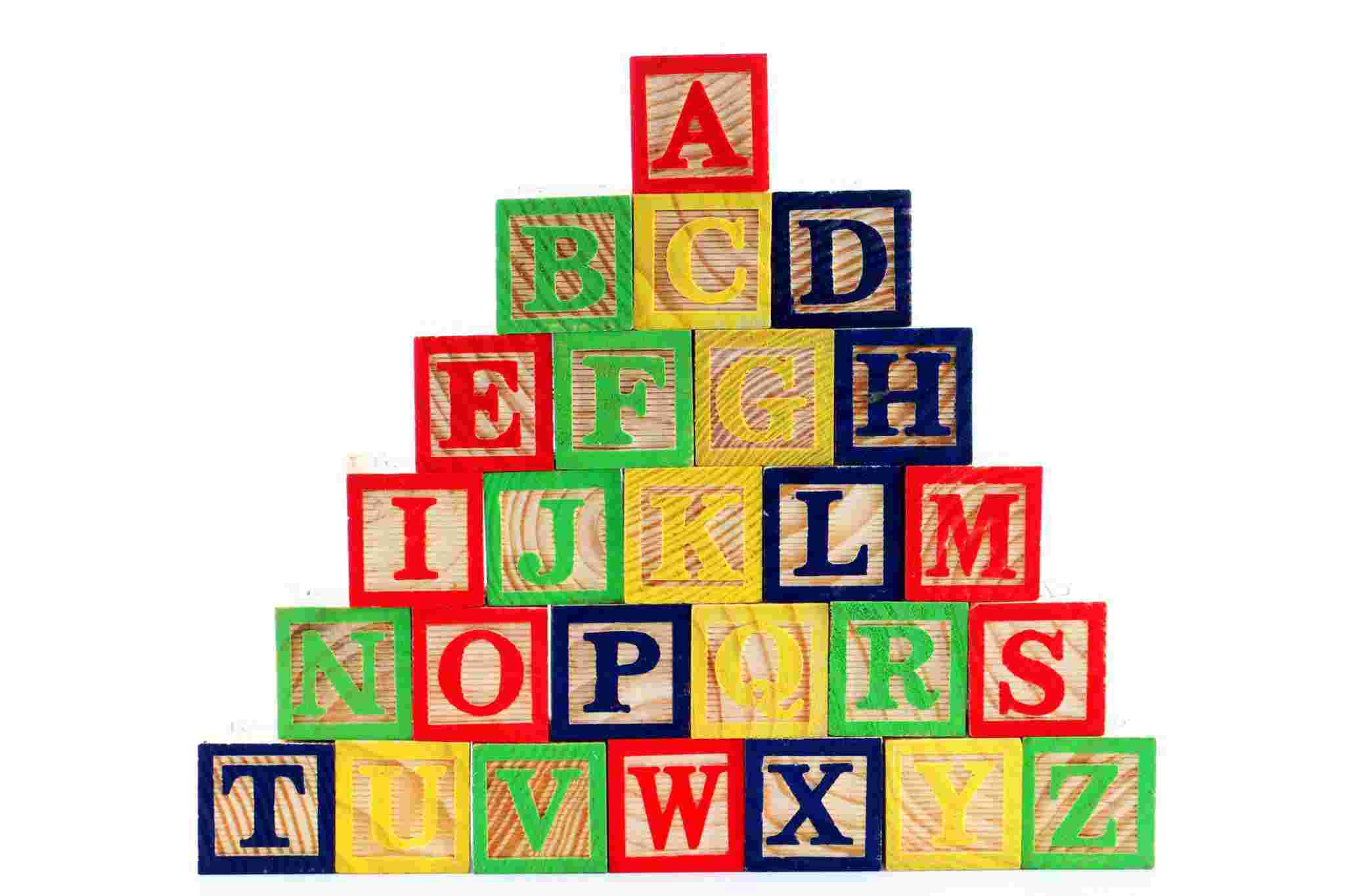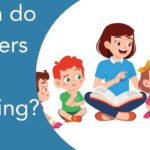In the fascinating realm of early child development, each developmental milestone achieved is a cause for celebration and curiosity.
From the moment they take their first steps to the joy of uttering their initial words, these moments mark significant progress in their growth.
Among these milestones, learning the Alphabet stands as a cornerstone, laying the foundation for future literacy and communication skills.
However, the journey isn’t the same for every child. This article tells the amazing story of a 5-year-old who creates his own path and overcomes challenges to learn the alphabet.
Join us as we explore the intricacies of developmental diversity and the importance of patience and individualized learning in a child’s early years.
5 year old doesn’t know alphabet
If a 5-year-old doesn’t know the alphabet, it’s important to introduce them to it in a fun and engaging way. Learning the alphabet is a developmental milestone, and children progress at different rates.
You can start by singing the alphabet song with them, using alphabet books, flashcards, or educational apps.
Make learning letters a playful activity, and be patient as they gradually become familiar with the alphabet.
In this question of ehy doesn’t my 5 year old doesn’t know alphabet, it is good to encourage their progress and celebrate small achievements to keep them motivated. It’s essential to create a positive and supportive learning environment.
1. Developmental Variation:
Learning the alphabet is a developmental milestone, and kids progress at their own pace. Some may know it by age 3, while others may not grasp it until age 6 or later.
Don’t forget to read:
2. Learning Style:
Children have different learning styles. Some may learn through play and interaction, while others may respond better to structured teaching methods.
3. Parental Involvement:
Encouraging alphabet recognition through games, books, and interactive activities can help. Make learning fun to engage their interest.
4. School or Preschool:
If your child is in preschool or starting school, educators often work on alphabet recognition. Consult with teachers to understand their progress in a school setting.
5. Learning Disabilities:
In some cases, difficulties with alphabet recognition could be linked to learning disabilities. If you suspect this, consult with a pediatrician or educational specialist.
6. ABC Song:
Sing the alphabet song together. It’s catchy and can make learning fun.
7. Alphabet Books:
Use picture books that associate each letter with a word or image. Show them pictures that start with each letter.
8. Letter Recognition Games:
Play games where they identify letters, like “I Spy” or finding letters in their environment.
9. Alphabet Blocks and Puzzles:
Toys like alphabet blocks and puzzles can be engaging tools for learning.
10. Repetition:
Consistency is key. Practice a few letters at a time and gradually introduce more.
11. Visual Aids:
Hang up an alphabet poster in their room or play area.
12. Writing Practice:
Have your child trace letters with their finger or use tactile materials like sandpaper letters. This helps with letter recognition and fine motor skills.
13. Positive Reinforcement:
Encourage and praise their efforts when they recognize or identify letters correctly.
Child struggling with letter recognition
Teaching letter recognition can be challenging, but it’s essential for early literacy.
Letter recognition is an important early literacy skill for children. If a child is struggling with letter recognition, it could be due to various factors:
1. Developmental Readiness:
Children develop at different rates. Some may be ready to recognize letters earlier than others. Patience is key.
2. Learning Style:
Children have different learning styles. Some may benefit from visual aids like flashcards, while others may learn better through hands-on activities or games.
3. Lack of Exposure:
Limited exposure to letters in their environment can hinder recognition. Ensure they have access to books, alphabet toys, and educational apps.
4. Learning Disabilities:
In some cases, learning disabilities like dyslexia can affect letter recognition. Consult with an educational specialist if you suspect this.
5. Individualized Support:
Tailor your approach to the child’s interests and abilities. Make learning letters fun and engaging.
6. Consistency:
Regular practice is crucial. Spend time daily on letter recognition activities to reinforce learning.
7. Multisensory Approach:
Use multiple senses to teach letters – sight, touch, and sound. Incorporate colorful alphabet books, magnetic letters, and letter-related games. Let them trace letters with their fingers, say the letter out loud, and associate it with a word starting with that letter.
8. Normal Development:
It’s important to remember that children develop at different rates. Struggling with letter recognition at a certain age doesn’t necessarily indicate a problem.
9. Phonemic Awareness:
Letter recognition is closely tied to phonemic awareness, which is the ability to hear and manipulate sounds in words. Encourage activities that focus on sounds and rhyming.
10. Start with the Basics:
Begin with uppercase letters, as they are generally easier to recognize. Once they’re comfortable, introduce lowercase letters.
11. Use Visual Aids:
Flashcards with letters and simple, clear images can make learning more engaging.
12. Interactive Games:
Educational apps and games can be fun while teaching letter recognition. Consider apps like ABCmouse or interactive alphabet puzzles.
13. Repetition:
Consistent practice is key. Spend a few minutes each day working on letter recognition.
14. Read Aloud:
Regular reading with your child exposes them to letters in context and reinforces recognition.
15. Reward System:
Positive reinforcement, like stickers or a small treat, can motivate a child to keep practicing.
16. Letter Games:
Engage in games like “I Spy” or “Letter Bingo” to make learning interactive.
17. Read Together:
Choose books with large, clear text and point out letters while reading.
18. Letter Tracing:
Have your child trace letters with their finger or use tactile materials like sandpaper letters.
19. Patience:
Every child learns at their own pace, so be patient and supportive.
20. Seek Professional Help:
If you suspect a learning disability, consult a teacher or specialist for guidance.
Why can’t my 5 year old recognize letters?
There could be several reasons why a 5-year-old may have difficulty recognizing letters. It’s important to remember that children develop at their own pace, and some variation in milestones is normal. Factors to consider:
1. Developmental Variability:
Children develop at different rates, and some may take longer to recognize letters than others.
2. Learning Environment:
The exposure to letters and reading materials at home and in preschool can influence a child’s letter recognition skills. Providing a print-rich environment can help.
3. Learning Style:
Some children learn through different styles (visual, auditory, kinesthetic). Try different approaches to teaching letters to see what works best for your child.
4. Lack of Exposure:
If a child hasn’t been exposed to letters and literacy activities, they may not have had the opportunity to learn them.
5. Learning Disabilities:
Occasionally, a learning disability like dyslexia can affect letter recognition. If you suspect this, consult a pediatrician or educational specialist for guidance.
6. Attention Span:
Short attention spans are common in young children. Keep lessons brief and engaging.
7. Emotional Factors:
Emotional factors like stress or anxiety can affect learning. Ensure a positive and supportive learning environment.
8. Vision Issues:
Ensure your child’s vision is checked, as poor vision can hinder letter recognition.
9. Educational Activities:
Engage in fun, age-appropriate educational activities that involve letters, such as reading books or playing letter-recognition games.
How do I get my 5 year old to recognize letters?
Teaching a 5-year-old to recognize letters can be an enjoyable and educational experience. Tips to help you get started:
1. Use Fun and Interactive Activities:
Make learning letters enjoyable through games, puzzles, and activities. Consider using letter flashcards, alphabet books, or educational apps designed for young children.
2. Repetition:
Repetition is key. Regularly expose your child to letters in different contexts, such as in books, on signs, or in everyday objects.
3. Sing the Alphabet Song:
Singing the alphabet song is a fun way to introduce letters and their order. Encourage your child to sing along with you.
4. Letter Recognition Games:
Start with uppercase letters as they are more commonly used and then introduce lowercase letters gradually. Use flashcards or toys with letters on them.
5. Letter Tracing:
Provide opportunities for your child to trace letters with their finger or using crayons. This helps with both letter recognition and fine motor skills.
6. Use Letter Magnets:
Magnetic letters on the fridge can be a fun way for your child to explore and arrange letters to form words.
7. Letter Sounds:
Teach the sounds associated with each letter. For example, “A” says “ah” like in “apple.”
8. Create Alphabet Art:
Incorporate art into learning by having your child create letter-themed artwork or crafts.
9. Read Aloud:
Reading to your child regularly exposes them to letters and words. Point out letters as you read and encourage them to do the same.
10. Use Everyday Opportunities:
Point out letters in their environment, such as on street signs, cereal boxes, or in books.
11. Play Word Games:
Play simple word games like “I Spy” where they have to identify objects starting with a specific letter.
12. Practice Writing:
Encourage them to try writing letters, even if it’s not perfect. Provide large sheets of paper and chunky crayon s.
13. Set a Positive Example:
Let your child see you reading and writing. Children often imitate their parents, so if they see you valuing letters and words, they may be more interested.
14. Be Patient and Encouraging:
Learning to recognize letters takes time, so be patient and provide positive reinforcement when your child makes progress.
15. Reading Together:
Regularly read books together. This exposes them to letters and words naturally.
16. Positive Reinforcement:
Praise and reward their efforts when they correctly identify or write letters.
17. Avoid Pressure:
Avoid putting too much pressure on them. Learning should be a positive and enjoyable experience.
How to teach a 5 year old to recognize letters
Teaching a 5-year-old to recognize letters can be a fun and engaging process. Here are some steps to help you get started:
1. Start with the Alphabet Song:
Sing the alphabet song together. This catchy tune can help them remember the order of the letters.
2. Introduce One Letter at a Time:
Begin by introducing one letter at a time, starting with the letters in their name or the most commonly used letters in the alphabet, like A, B, C, or S.
3. Use Visual Aids:
Utilize colorful and large visual aids like flashcards or posters with big and clear letters on them. You can find printable resources online or create your own. Point to each letter as you say its name.
4. Letter Games:
Play letter recognition games like “I Spy” where you say, “I spy something that starts with the letter ‘A’.” Have them find objects that start with that letter.
5. Letter Tracing:
Encourage them to trace letters with their fingers or on paper. You can use tactile materials like sandpaper letters or a sensory tray with salt or rice.
6. Alphabet Books:
Read alphabet books that feature letters and objects that start with each letter. This helps associate letters with familiar words.
7. Letter Sounds:
Teach the sounds that each letter makes. For example, “A says ‘ah’ like in apple.”
8. Letter Recognition Games:
Play games like Bingo with letters or use educational apps and websites designed for letter recognition.
9. Be Patient and Encouraging:
Keep the learning experience positive and be patient. Celebrate their progress, no matter how small.
10. Consistency:
Practice regularly, but keep sessions short and engaging to maintain their interest.
11. Real-Life Practice:
Point out letters in their environment, like on street signs, food packaging, or in books.
12. Start with the Basics:
Begin with the letters of their name and other familiar letters like those in “mom” or “dad.”
13. Read Aloud:
Read alphabet books or simple stories that feature letters prominently. Point out and name letters as you come across them.
14. Interactive Apps:
There are numerous educational apps designed to teach kids letters through games and activities. Supervise their screen time.
In conclusion of why doesn’t my 5 year old doesn’t know alphabet?, the article highlights the case of a five-year-old child who has not yet learned the alphabet. While every child develops at their own pace, it’s essential to provide support and resources to help them catch up with foundational skills like recognizing letters. Early intervention and a nurturing environment can play a crucial role in ensuring the child’s educational success as they continue to grow and learn.












